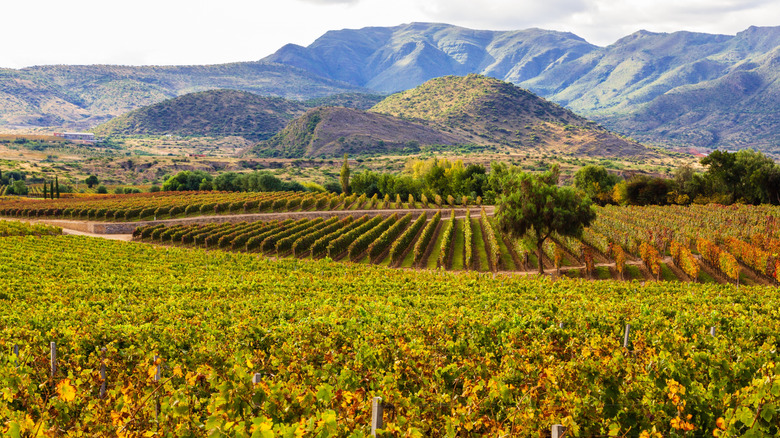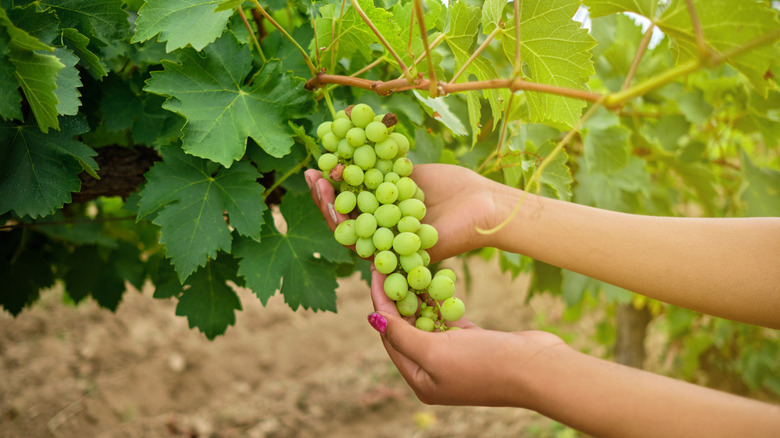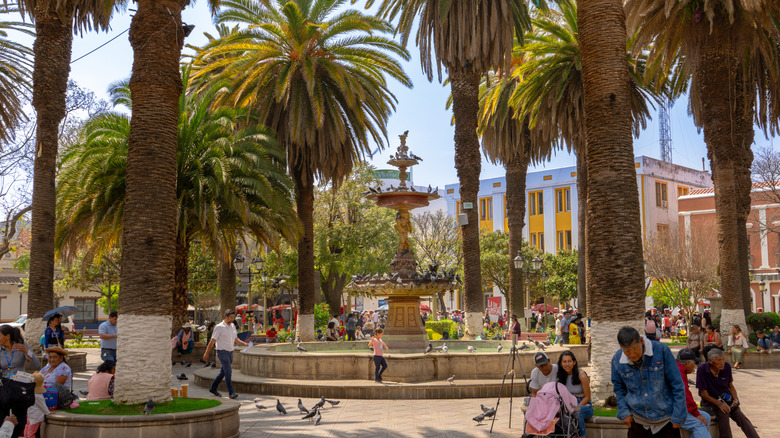Bolivia's Wildly Affordable, Breathtaking, And Largely Undiscovered Wine Region Could Pass For Tuscany
Tuscany's rolling, sun-drenched and vineyard-blanketed hills are the stuff of oenophilic dreams. Its allure as a tourist destination reaches back centuries, inspiring countless others, like the underrated wine region, Temecula Valley, in California, and making it a force to be reckoned with in the tourism landscape. But with that popularity, it's no surprise that things can get a little pricey and overcrowded. If you're seeking a quieter experience, the wildly affordable and largely undiscovered wine region of Tarija could pass for Tuscany, with a little South American flair.
Despite its stunning mountains and lush rainforests, Bolivia has largely been overshadowed by neighboring Peru. But the landlocked nation is finally stealing some of the limelight, and the spectacular wine region of Tarija is an important part of that. Attractions like the vast Uyuni salt flats and the North Yungas Road (or Death Road) have drawn backpackers and other tourists on short trips, but the underlying culture and experience found in places like the two capitals, La Paz and Sucre, and the winemaking regions are now highlighting the country's depth.
Argentina and Chile may be the dominant forces in South American wine, with their vibrant Malbecs and Carménère, but Tarija has been quietly racking up the accolades for its super-high altitude takes on global grape varieties. Even better news is that its tourist experience is quickly growing, placing Tarija on the radar of intrepid wine lovers.
What to do in Bolivia's breathtaking wine region of Tarija
Despite growing grapes and producing wine since the 17th century, Bolivia, and more specifically, Tarija, isn't globally renowned as a winemaking region. Even within the country itself, Tarija was better known for producing the national liquor, Singani, a type of brandy made from Muscat of Alexandria grapes. But today, it's the nation's largest producer, with multiple wineries operating and now offering tours.
Getting up close and personal with the wineries is one of the best ways to spend time here. As the tourist landscape is still developing, it's a rare opportunity to experience less polished (and often clinical or impersonal) tours in some of the more famous regions. As one of the largest producers, Kohlberg is an excellent place to start. For a more intimate experience, a bodega like Campos de Solana is perfect, offering tastings with local cheese and charcuterie. It's important to remember that planning these in advance can be a hassle, but as it's still unlikely to be too crowded, you should be okay.
The small town of Tarija itself is also worth a visit. It has a storied history, stretching back through Indigenous tribes, the Incan Empire, and Spanish colonization. It was even part of Argentina for a period. Its history is highlighted in the remarkable architecture, the surprising culinary scene, and the excellent little museums on offer in the town. It's likely Tarija will be your base for any wine exploration, so make the most of it.
How to get to the underrated Bolivian wine region of Tarija
Getting to Tarija can be a complicated experience. Flying into Bolivia, you'll land at either La Paz, Cochabamba, or Santa Cruz de la Sierra. Afterward, you'll still have a long way to go. The easiest way is to grab a local flight to Tarija's small airport. If you feel brave enough for an adventure, you're looking at an 11-hour minimum drive from Santa Cruz with unpredictable road conditions. Thrill seekers who have already passed through Bolivia's genuinely dangerous death road probably won't find that an issue.
Once in Tarija, you have a delightful array of affordable hotels and guesthouses to choose from, with even the five-star options only just tipping beyond the $100 mark. These options include Hotel Los Parrales, Hotel Innova, and Casona Gloria, as well as a handful of hostels like Hostel Casa Blanca and Hostel Pata&Perro. The local restaurants are similar in value, with everything from steakhouses, like Casona del Molino (serving local wine, of course), to Italian joints such as Gattopardo Taberna. Even the pickiest eating party is sure to be pleased with the options.


